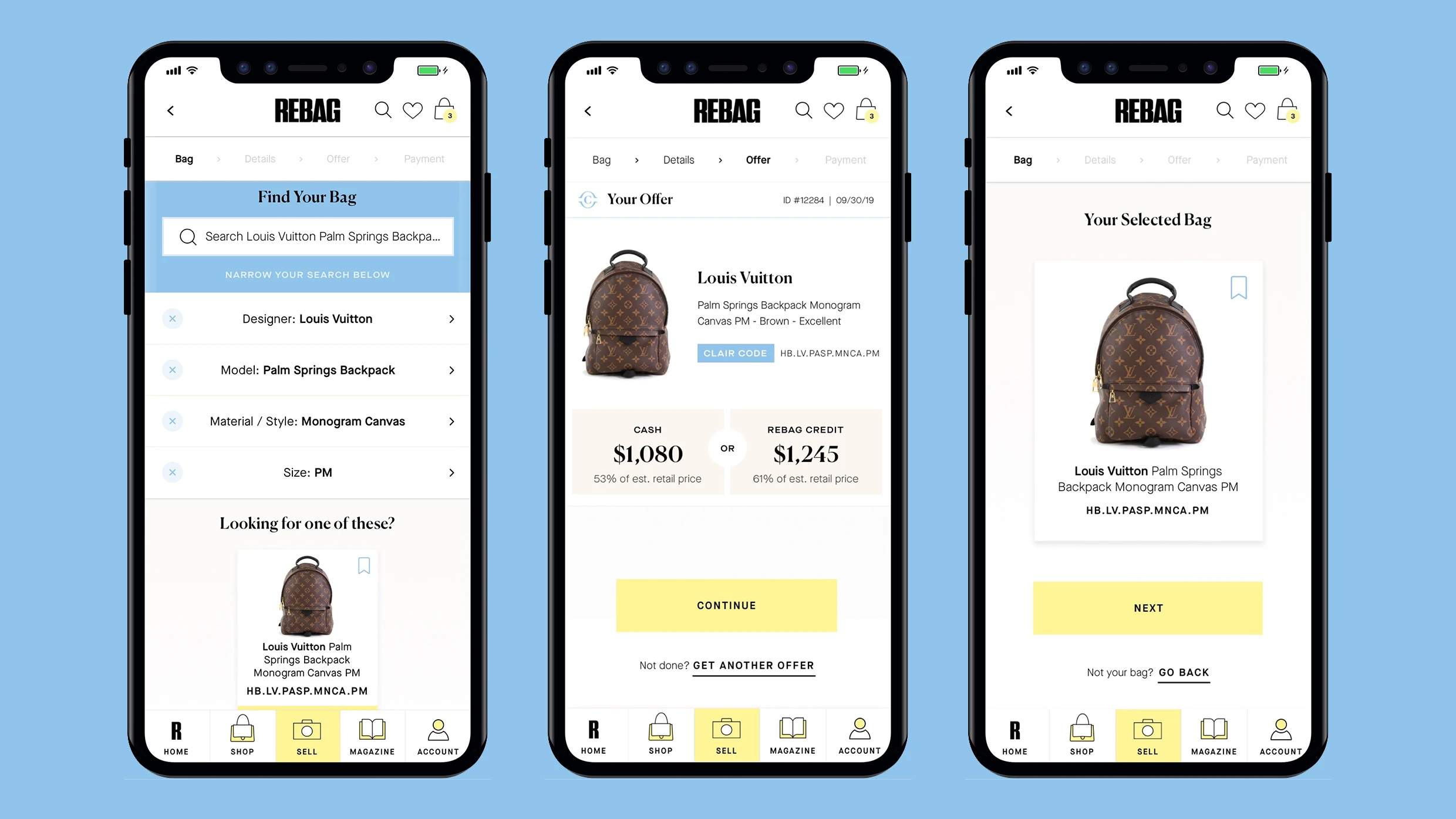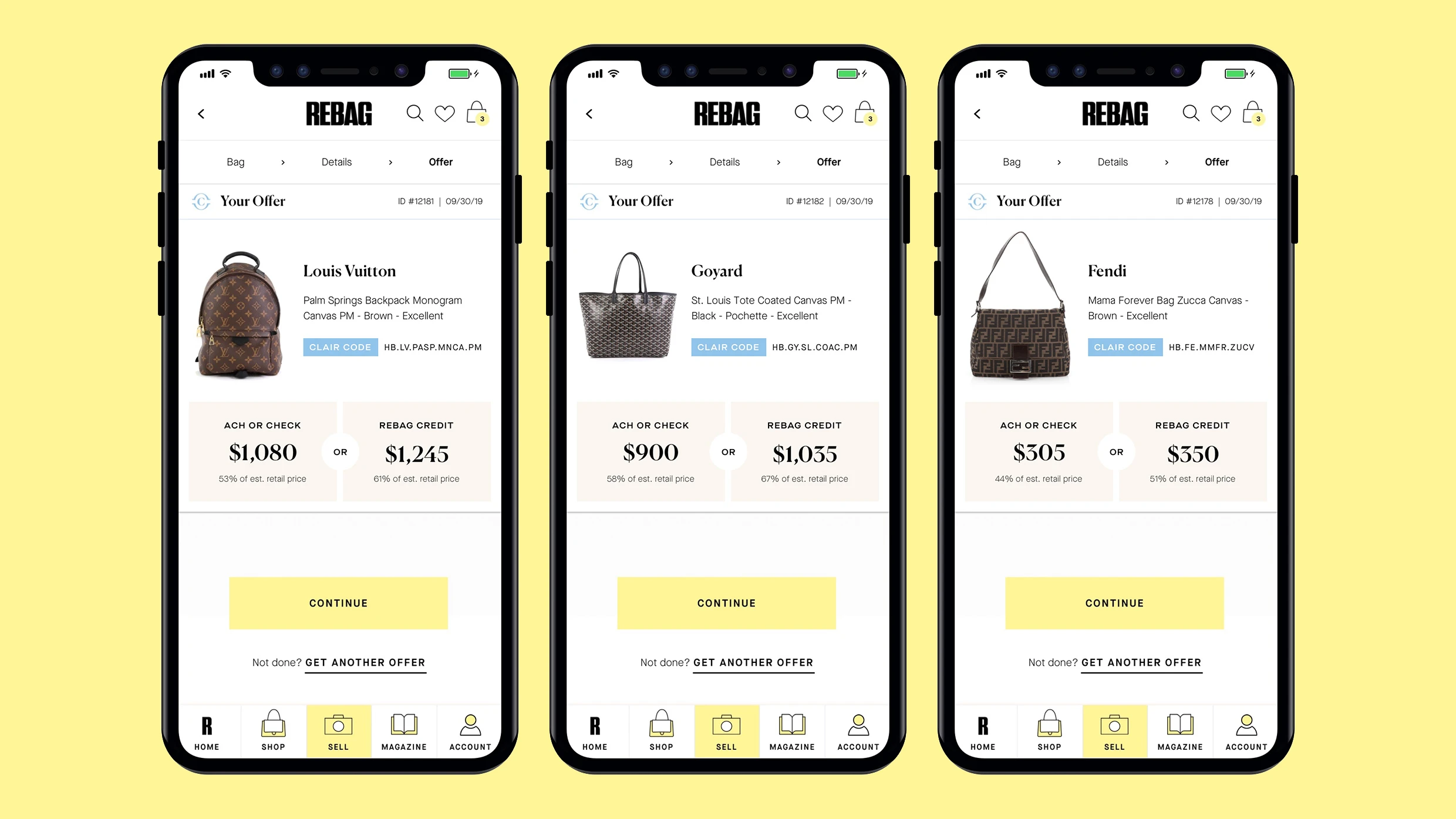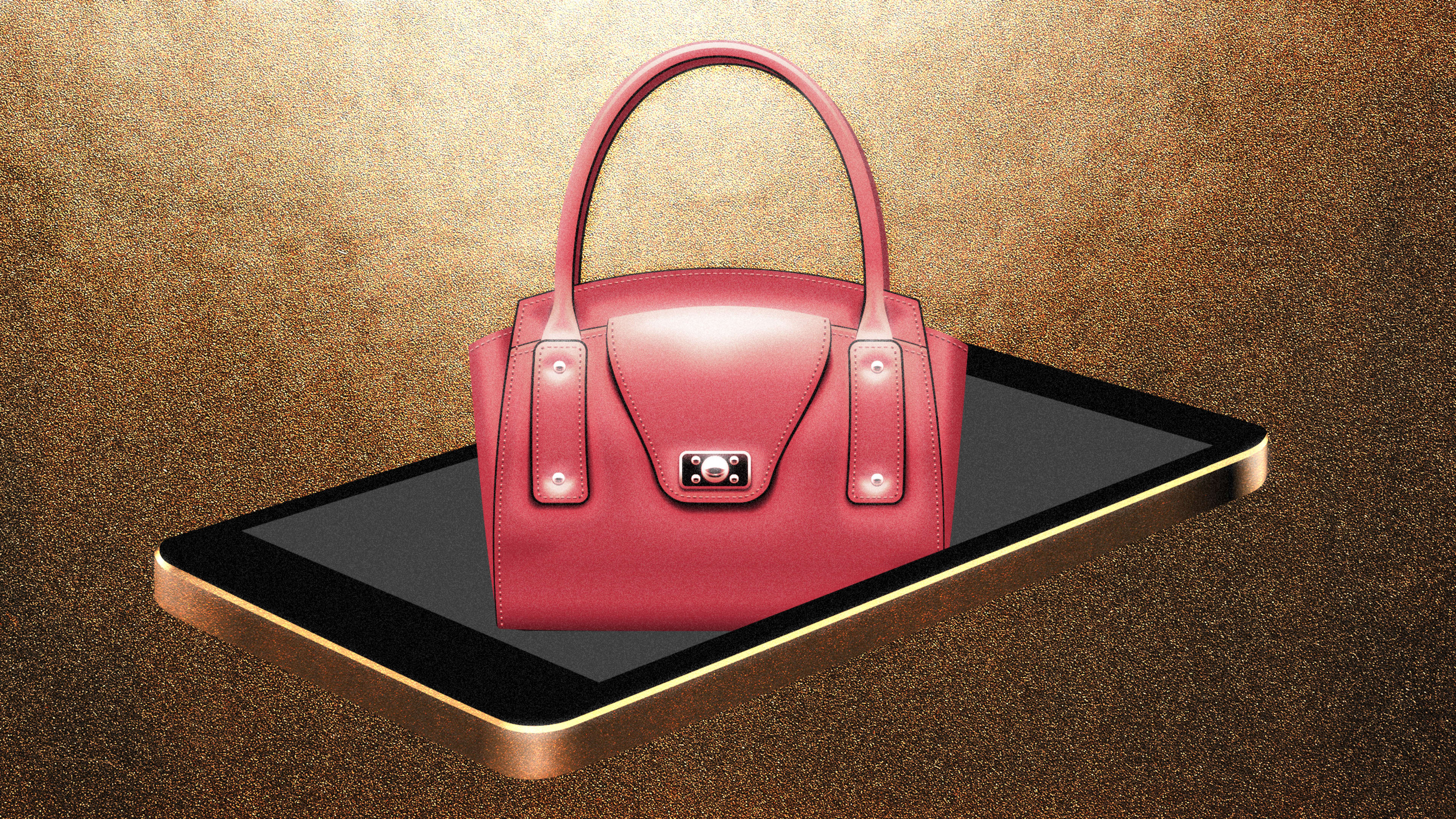If you have a weakness for luxury products, there’s a good chance you have a gently used handbag in your closet from a brand like Prada or Chanel. You paid a lot of money for it, so you’ve handled it with kid gloves, making sure to avoid scratches or scuffs. But now, there’s a gorgeous new model on the market, and you’d be willing to sell your old bag to help fund a new one. The problem is, how do you know where you’ll get the best price for it? How can you make sure you won’t get ripped off?
Charles Gorra, founder and CEO of luxury-handbag resale platform Rebag, says this is precisely the hurdle that prevents many consumers from selling their products online. So today, Rebag launched a new tool called Clair (which stands for “Comprehensive Luxury Appraisal Index for Resale”) that will allow sellers to quickly assess the value of their bags.

Rebag, unlike some other resale sites, buys bags directly from consumers, rather than asking them to consign their goods. This means that Rebag owns all of the inventory on its site, an approach that requires a lot of capital. Part of this business model means that the company has had to be very good at accurately assessing the value of each bag it purchases. Since Rebag launched five years ago, the company has been tracking the value of each handbag that enters the platform, developing a comprehensive database of more than 10,000 handbag models from 50 brands. When a customer uses Clair, they put in some details about the age and model of their bag, along with information about its condition, and the algorithm determines how much the bag is worth on the secondhand market.

Clair lives on the Rebag app and website, but you don’t have to sell your bag on the platform to gain access to this data—it’s freely available to the public. “Rebag will pay the seller the amount that is assessed on Clair,” Gorra says. “In other words, it is only worthwhile to the seller to sell elsewhere if they can get significantly more than what they are assessed on Clair.”
Clair is similar to the assessment tools used in some other secondhand markets, like cars. At this point, it’s relatively easy to figure out the value of your used car: You might be able to get more or less for it depending on whom you sell it to, but you’re aware of its market value. Gorra, who spent years as a financial analyst for companies like Goldman Sachs and Rothschild, thought it was strange that a similar system did not exist in the world of used luxury products.
The trickiest part of pricing for resale is figuring out the bag’s condition, which can be subjective. To get the customer to provide an accurate assessment of their bag’s condition, Clair offers images of bags with various nicks and scrapes so users can determine whether their bag qualifies as pristine or heavily used. (This is a similar issue with the car market; pricing platforms rely on customers to accurately assess if their car is like new or banged up.)
Data from Clair might influence not only the resale market, but the new bags people buy, since it’s now easier to know which will retain value. “Hermes bags, for instance, are more expensive to purchase, but our data shows that they retain almost 100% of their value over time,” Gorra says, and Hermes Birkin and Kelly models often resell for more than their initial cost.
Gorra believes having a pricing tool will open up reselling to a much wider market. His own market research suggests that only 10% of all luxury consumers are putting their products up for sale. While the internet has made it easier than ever to sell goods online, many still appear to find it too much of a hassle.
“The majority of luxury consumers still aren’t participating in this resale economy,” he says. “There’s a lot we can do to make the process more seamless, so they want to be part of it.”
Recognize your brand’s excellence by applying to this year’s Brands That Matter Awards before the early-rate deadline, May 3.
